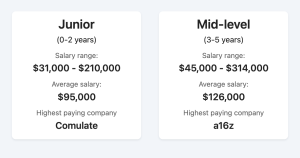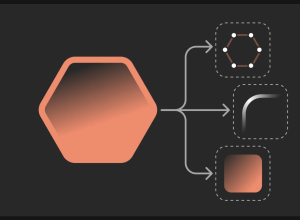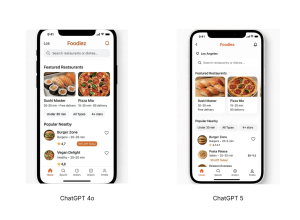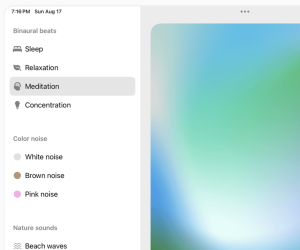User Experience Designer Salary in San Francisco
The average base salary for a UX designer in San Francisco ranges from $95,000 per year for Junior talent to $141,000 per year for Senior talent. The median salary is $145,000. The highest reported salary is $515,000, offered by Netflix, for a UX Designer, Live Event Operations & Production XD. The average additional cash compensation is $17,625.











